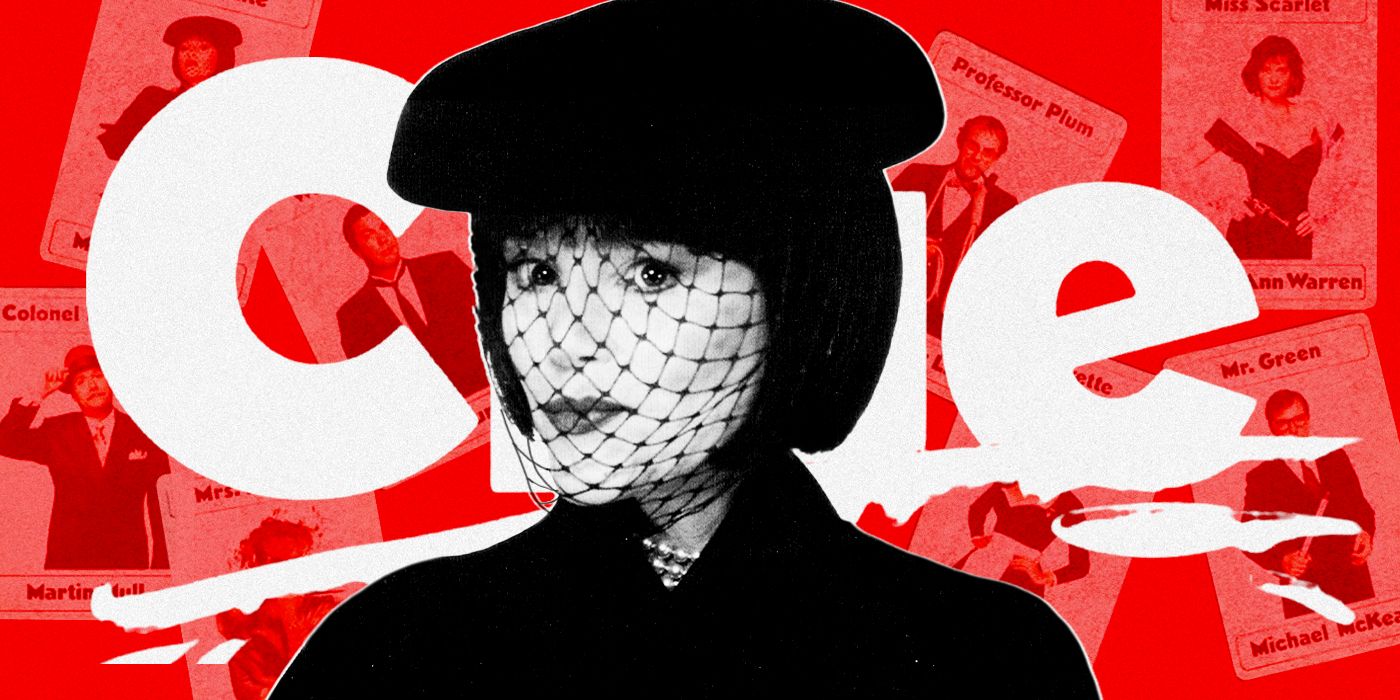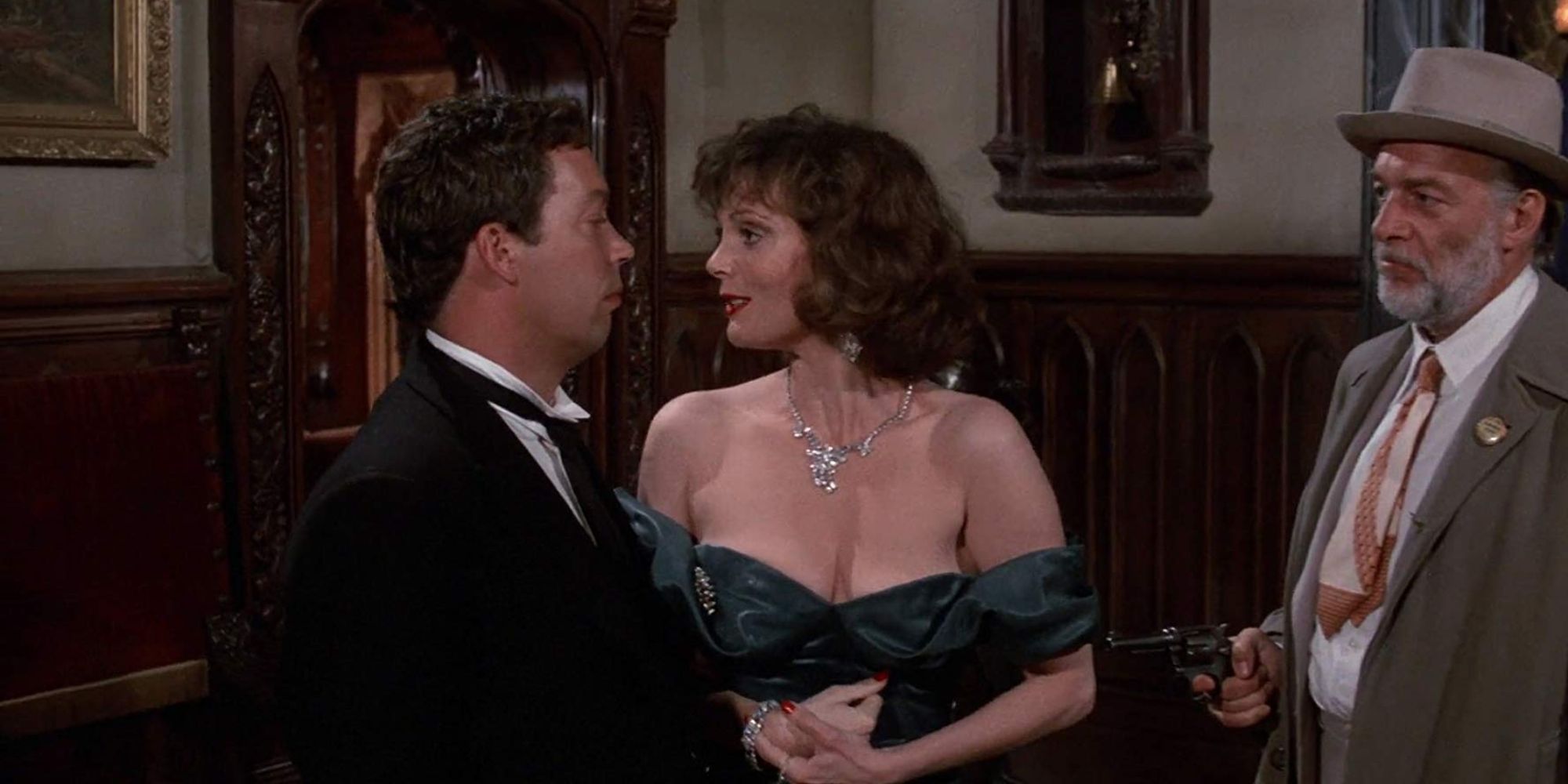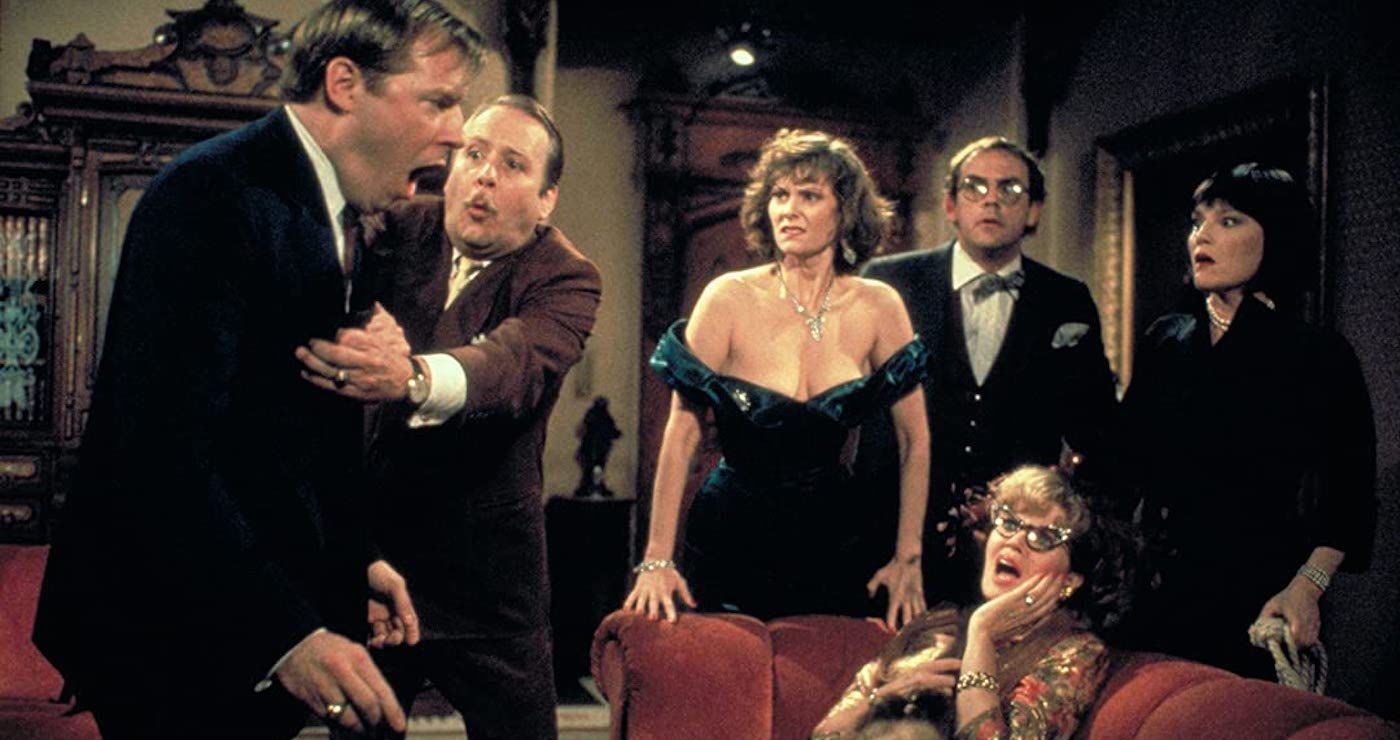The 1985 film Clue is probably the best board-to-screen adaptation ever made, not that there’s much competition. This uniqueness is what makes it significant, though. The film brilliantly uses trademarks of the board game it was based on, including but not limited to the film’s multiple endings. Any board game connoisseur knows that Clue the game can end with any of the seven characters as the murderer. Thus, Clue the movie depicts several somewhat infamous alternate endings. The theatrical run of the film saw each screening with a different alternate ending. Clue’s box office failure is usually attributed to this stunt, but, since the DVD, television and streaming versions all contain a clever edit of all three endings, the film has enjoyed a successful second life, and is often referred to as a cult classic.
Clue is a murder mystery that features all the familiar characters from the board game (Mrs. Peacock, Professor Plumb) and a few new characters added by writer/director Jonathan Lynn, most significantly Tim Curry’s Wadsworth the Butler. The film opens with a mysterious dinner party in which guests arrive and are given aliases like Miss Scarlet (Lesley Ann Warren). Later, it is revealed that each guest is being blackmailed. A peculiar set of weapons (recognizable from the game) are gifted to each player. Mr. Boddy (Lee Ving), the host, tells the guests that someone must kill Wadsworth in order to escape with their secrets. A lively discussion ensues until suddenly, the lights go out. Mr. Boddy, the alleged blackmailer, is dead, and the murderer had to be one of the dinner guests as they were the only people in the house.
The Endings, Explained
The edit that displays every ending begins with title cards that read “how it might have ended." The first ending depicts Miss Scarlet as the killer and ultimate blackmailer. Miss Scarlet, who ends up with the revolver. Miss Scarlet attempts to shoot Wadsworth, but fails due to the lack of bullets in the gun. Wadsworth is revealed to be an FBI agent and Ms. Scarlet is arrested. The next title card reads “How About This?” and presents a similar situation in which Mrs. Peacock (Eileen Brennan) is the culprit. The last title card reads “And Here’s What Really Happened," presenting a situation in which every character has killed at least one person, and Wadsworth is the real blackmailer. Mr. Green (Micheal McKean) is an FBI agent who calls the police and arrests everyone for their crimes.
In interviews conducted well after the theatrical release of Clue, Tim Curry has revealed that a fourth ending was filmed but ultimately excluded from the final cut. The scene, which allegedly pictured Wadsworth poisoning the after-dinner drinks and effectively killing the entire cast, has never been viewed or included in any type of edit, perhaps because it was too macabre for a film that is ultimately a comedy. Overall, the combined endings make for a charming conclusion to the film, so the decision can feel peculiar. Even Roger Ebert, who gave the film a mostly positive review, suggested that combining the endings would have made for a better film.
It’s easy to assume that Clue’s alternate ending tactic was a marketing scheme, as the studio was essentially asking movie viewers to buy three tickets to a film that was the same all the way through, up until the end. This type of gimmick may have worked, were it not for the fact that the endings were distributed by region, likely implying that viewers would have to travel well outside their usual movie theaters if they were determined to see all three endings. Additionally, even if they went to a different theater, there was no guarantee which ending they might see. There is no evidence that the regional divide was ever made apparent to the ticket-buying customer. Trade publications like Variety and The Hollywood Reporter mentioned the film’s producer, Debra Hill, after the film was released. Hill was quoted in discussion of combining the endings, likely hoping that the chance to see all three would fix the box office problems. It does not appear as though Hill’s wishes were ever brought to fruition, but considering the film’s vibrant second life, it’s a shame she didn’t act sooner.
How It Should've Ended
However, marketing schemes aside, there is some artistic metric to what Clue attempted to do with its many endings. In interviews conducted prior to the film’s release, Jonathan Lynn alludes to being very involved with the decision to split up the endings. This makes sense, as most of his directorial decisions seek to emulate the game play experience. For instance, the vernacular, including weapons and character names, are all cleverly worked into a believable, if comical, plot. The mansion in which the entirety of the film takes place is modeled after the board game, secret passages included. Since the game can end up differently every time, splitting the endings up makes sense in theory, but not in practice. Lynn, a new director at the time, stated that much of his Hollywood reputation relied on the success of Clue. He was confident that the film would do well. It seems as though he was right. According to Lynn himself, he was blacklisted from Hollywood for a number of years after the film’s release.
The fact that the film has prompted many written retrospectives, a Rocky Horror-like screening situation, and a luscious television life speaks to both the skill of everyone involved with the film, Jonathan Lynn especially, and the gravitas of every single decision a filmmaker makes. Had Lynn chosen to combine the endings from the beginning, things might have ended differently. Clue is a uniquely brilliant film that uses intellectual property in a way that was unparalleled probably until the Pirates of the Caribbean movies. It’s a smart, funny, well-acted satire that utilizes both murder mystery and board game tropes to entertain and delight. It is especially ironic that the film’s future could have ended differently if, well, things had ended differently. The murderer behind the death of Clue will probably always remain unknown. However, as the film is enjoying a fruitful second life, the suspects can hopefully sleep soundly.


.jpg)

